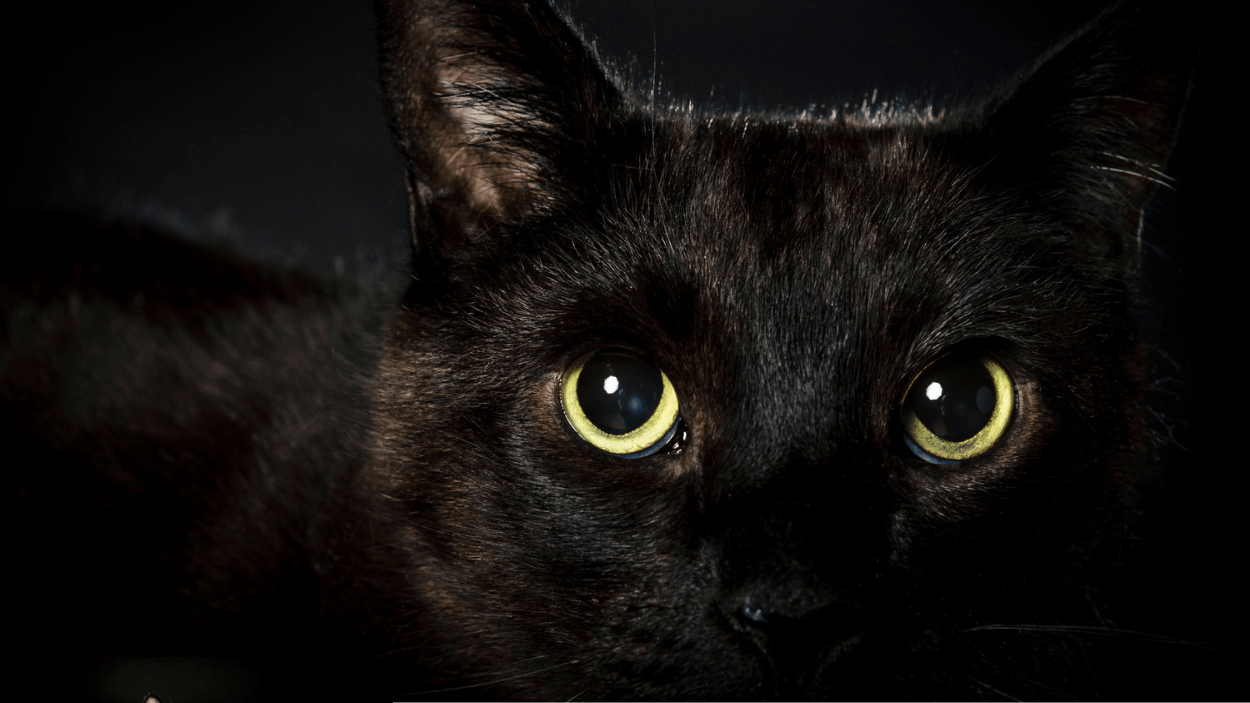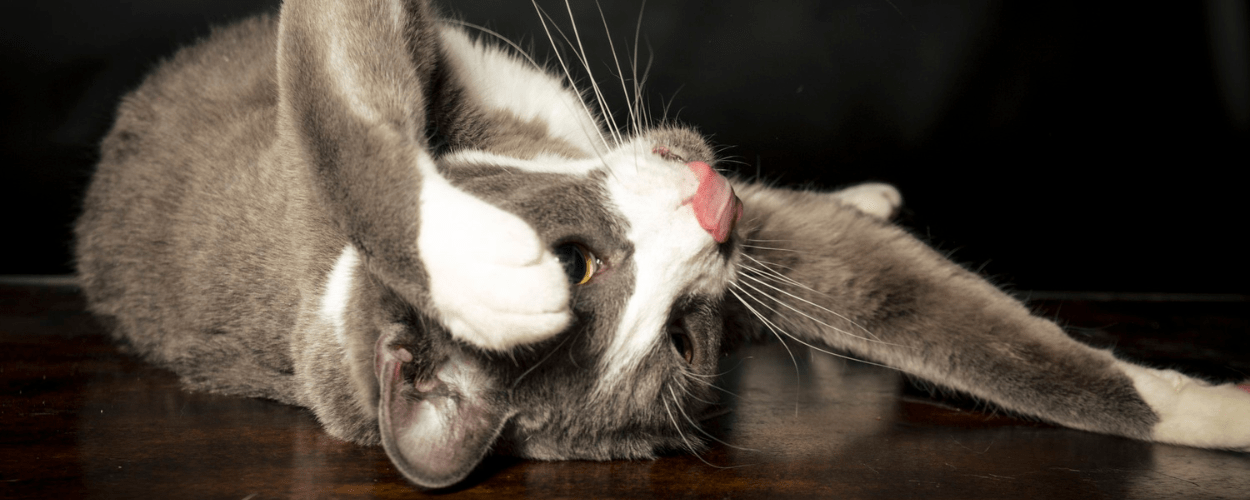How to get the perfect headshot for your cat
Taking a great cat headshot requires preparation, patience, and attention to detail. A well-crafted shot can showcase your cat's unique personality, capture a moment in time, and create a lasting memory. In this article, we'll explore the importance of a great cat headshot and provide step-by-step guidance on how to create the perfect shot for your feline friend.
Also Read:
Free consultation with a professional cat photographer. Click here.
Understanding the importance of a great cat headshot
Having a high-quality cat headshot can serve many purposes, from creating a fun social media profile to immortalizing your beloved pet in a timeless portrait. A great headshot emphasizes your cat's best features and captures their unique demeanor. It can also be a useful tool in identifying lost cats, making it imperative to get a clear, well-lit shot.
Showcasing your cat's personality
One of the key aspects of a great cat headshot is the ability to showcase your cat's personality. Whether they're a proud and regal creature or an energetic and playful kitten, a great headshot can highlight their unique quirks and individuality. For example, if your cat loves to play with toys, you could have them hold a toy in their mouth for the photo. Alternatively, if your cat is known for their love of napping, you could capture them in a peaceful slumber.
Another way to showcase your cat's personality is through their surroundings. If your cat loves to be outside, you could take their headshot in a garden or park. If your cat loves to cuddle up on the couch, you could take their headshot in your living room. By incorporating your cat's favorite places and activities into their headshot, you can create a truly unique and personalized image.
Making a lasting impression on social media
Social media is full of pet lovers eager to share photos of their furry friends. A great cat headshot can garner shares, likes, and comments, leading to a growing fan base and online presence. Putting effort into a great headshot can also help your cat stand out from the crowd. To make your cat's headshot stand out, you could use creative angles or lighting to create a unique and eye-catching image. You could also add a fun caption or quote that captures your cat's personality.
Creating a memorable keepsake
A great cat headshot can also serve as a beautiful keepsake to cherish over the years. Emphasizing your cat's unique features and personality can create a lasting memory of your beloved pet. In addition to displaying your cat's headshot in your home, you could also create personalized items such as mugs, phone cases, or blankets featuring your cat's image. These items can serve as a daily reminder of the joy your cat brings to your life.
Overall, a great cat headshot is a valuable investment for any cat owner. It can showcase your cat's personality, make a lasting impression on social media, and create a beautiful keepsake to cherish for years to come.
Preparing your cat for the photoshoot
A successful cat photoshoot requires preparation and patience. Here are some tips to ensure your cat is ready to step in front of the camera:
Grooming tips for a polished look
Grooming your cat before the shoot can help create a polished and professional look. Brushing their fur, trimming their nails, and wiping away any dirt or debris can help your cat look their best. It's important to use grooming tools that your cat is familiar with and comfortable using. Make sure to give your cat plenty of breaks during the grooming process, and reward them with treats and praise for good behavior.
It's also a good idea to give your cat a bath a few days before the shoot. This will give their coat a nice shine and help remove any loose fur. Be sure to use a cat-friendly shampoo and rinse thoroughly to avoid any skin irritation.
Creating a comfortable environment
A calm and comfortable environment is key when photographing cats. Select a quiet, well-lit space and remove any potential distractions, such as toys or food. Using a familiar backdrop or blanket can also help your cat feel more at ease.
Try to create a relaxing atmosphere by playing soft music or using a pheromone spray designed to calm cats. It's also important to give your cat plenty of time to explore and get comfortable in the space before starting the shoot.
Choosing the right time for the shoot
Cats can be finicky creatures, so selecting the right time for the shoot can make a big difference. Consider your cat's daily routine and choose a time when they're most relaxed and alert. Avoid scheduling the shoot during nap time or mealtime.
It's also a good idea to plan the shoot around your cat's personality and preferences. If your cat is more active in the morning, schedule the shoot for then. If they prefer a cozy spot in the afternoon sun, plan the shoot for that time of day.
Remember, patience is key when working with cats. Take breaks as needed and don't force your cat to do anything they're not comfortable with. With a little preparation and a lot of patience, you can capture beautiful photos of your feline friend.
Selecting the ideal background and setting
The background and setting can greatly impact the overall look and feel of your cat's headshot. Here are some tips for selecting the perfect backdrop:
Indoor vs. outdoor locations
Think about the style of shot you're going for and whether an indoor or outdoor location would be best suited for your cat. Outdoor locations can provide natural light and scenic backdrops, while indoor locations offer more control over lighting and setting.
If you decide to go with an outdoor location, consider the time of day and weather conditions. Early morning or late afternoon can provide the most flattering light for your cat's fur. On the other hand, if it's too hot or cold outside, your cat may not be comfortable and may not cooperate for the shoot.
For indoor locations, consider using a plain-colored wall or backdrop to keep the focus on your cat. You can also experiment with different lighting setups to create a unique and dramatic look.
Choosing a complementary color scheme
Selecting a complementary color scheme can create a cohesive and visually pleasing shot. Try using colors that complement your cat's fur tone or eye color. For example, if your cat has blue eyes, try using a blue or purple backdrop to make their eyes pop.
You can also use contrasting colors to create a bold and eye-catching shot. For example, if your cat has orange fur, try using a blue or green backdrop to create a striking contrast.
Incorporating props and accessories
Props and accessories can add an extra element of interest to your cat's headshot. Think about their favorite toys or items that reflect their personality. A simple bowtie or bandana can also add a touch of charm.
When using props, make sure they don't overpower your cat and that they're safe for them to interact with. You can also use props to create a theme for the shoot, such as a beach or holiday theme.
Remember, the goal is to showcase your cat's unique personality and characteristics, so don't be afraid to get creative with your background and props!
Check out: The fine art of choosing the right background to improve your photography
Mastering the technical aspects of cat photography
Cat photography is a unique art form that requires a great deal of patience, attention to detail, and technical expertise. Whether you are a seasoned professional or a beginner, mastering the technical aspects of cat photography can help you take your skills to the next level. Here are some technical tips to ensure a successful photoshoot:
Camera settings for capturing sharp images
One of the most important aspects of cat photography is capturing sharp, clear images of your furry friend. To achieve this, you need to have a basic understanding of your camera's settings. Start by experimenting with your camera's aperture, which controls the amount of light that enters the lens. A wider aperture (lower f-stop number) will create a shallow depth of field, which can help blur the background and make your cat stand out. On the other hand, a smaller aperture (higher f-stop number) will create a deeper depth of field, which can help keep more of the image in focus.
Shutter speed is another important setting to consider when photographing cats. A faster shutter speed can help freeze your cat's movements and prevent blurry images, while a slower shutter speed can create a sense of motion and blur.
ISO is the final setting to consider. This setting controls the camera's sensitivity to light. A higher ISO can help you capture images in low light conditions, but it can also create more noise (graininess) in your images. Experiment with different ISO settings to find the right balance for your particular shoot.
Lighting techniques for a professional look
Lighting is crucial when it comes to capturing a great cat headshot. Whether you are shooting indoors or outdoors, it is important to have a basic understanding of lighting techniques. Natural light is often the best choice for cat photography, as it can help create a soft, natural look. If you are shooting indoors, try to position your cat near a window or other source of natural light.
If you are shooting in low light conditions, you may need to incorporate artificial lighting to achieve the desired effect. Softbox lights or other diffused lighting sources can help create a professional look without creating harsh shadows or overexposure.
The role of depth of field in cat headshots
Depth of field is an important concept to understand when it comes to cat photography. This term refers to the distance between objects that appear in focus in a photograph. Choosing the right depth of field can help emphasize your cat's features and create a professionally shot image.
A shallow depth of field can help blur the background and make your cat stand out. This technique works particularly well when shooting close-up portraits of your cat's face. On the other hand, a deeper depth of field can help keep more of the image in focus, which can be useful when capturing images of your cat in motion or in a larger setting.
Ultimately, the key to mastering the technical aspects of cat photography is practice. Experiment with different camera settings, lighting techniques, and depth of field to find the right combination for your particular shoot. With time and patience, you can capture stunning images of your feline friend that you will treasure for years to come.
Also read: Camera Settings for Headshots
Conclusion
By following these tips, you can create a stunning and memorable headshot for your cat. Remember, preparation, patience, and attention to detail are key when it comes to capturing the perfect shot. Whether you're looking to showcase your cat's personality on social media or create a lasting keepsake, a great headshot can make all the difference.
Professional cat photography service. Click here to learn more.
Final Quick Tips:
Taking Cat Headshots with a Smartphone
Natural Lighting is Key: Utilize natural light as much as possible, either by shooting near a window or outdoors. It provides the best illumination for your cat's features.
Steady Hand or Tripod: Ensure your smartphone is held steady to avoid blur. You can use a tripod or rest your phone on a stable surface for better results.
Quiet Environment: Cats can be easily distracted by noises. Choose a quiet location to keep your feline model calm and focused.
Portrait Mode: If your smartphone has a portrait mode, use it to create a beautiful background blur, emphasizing your cat's face.
Focus on the Eyes: Make sure the cat's eyes are in sharp focus. They are the windows to their soul and should be the center of attention.
Capture Expressions: Be patient and ready to capture various expressions. Cats have a wide range of emotions that can lead to unique and adorable shots.
Eye Level Shooting: Get down to the cat's eye level to create a more engaging and personal connection in your photos.
Use Treats or Toys: Keep your cat engaged by using their favorite treats or toys to hold their attention during the photoshoot.
Burst Mode: Use your smartphone's burst mode to take multiple shots in quick succession, increasing the chances of capturing the perfect moment.
Use the Grid: Enable the grid feature on your phone's camera to ensure your shots are well-composed and level.
Clean Lens: Ensure your smartphone's camera lens is clean and free of smudges to maintain image clarity.
Focus Lock: Use the focus-lock feature to maintain focus on your cat's face, even if they move around.
Silent Mode: Turn your smartphone to silent mode to prevent any sudden noises from startling your cat during the photoshoot.
Editing Apps: After the photoshoot, use photo editing apps to enhance colors, contrast, and sharpness for a polished result.
Patience: Cats can be unpredictable, so be patient and take your time. It may require multiple sessions to get the perfect shot.






